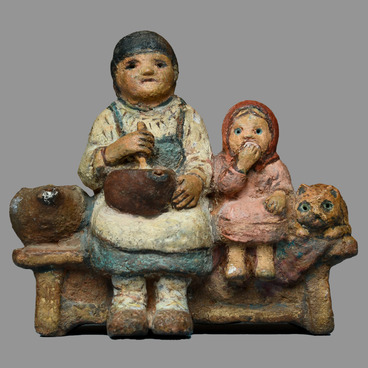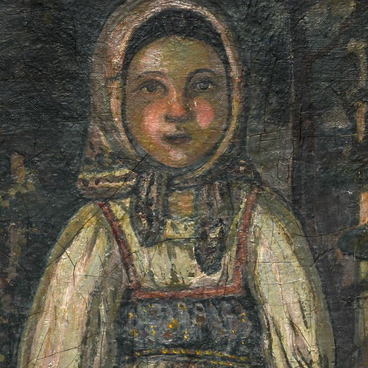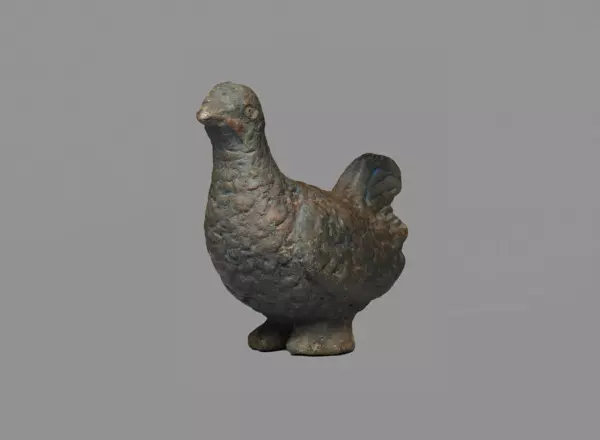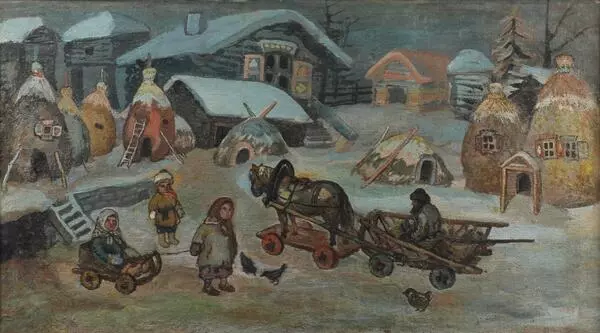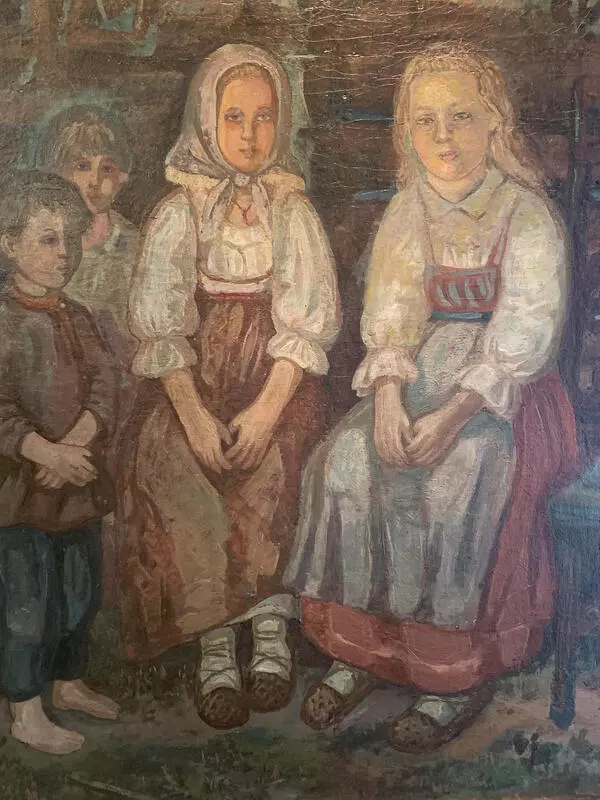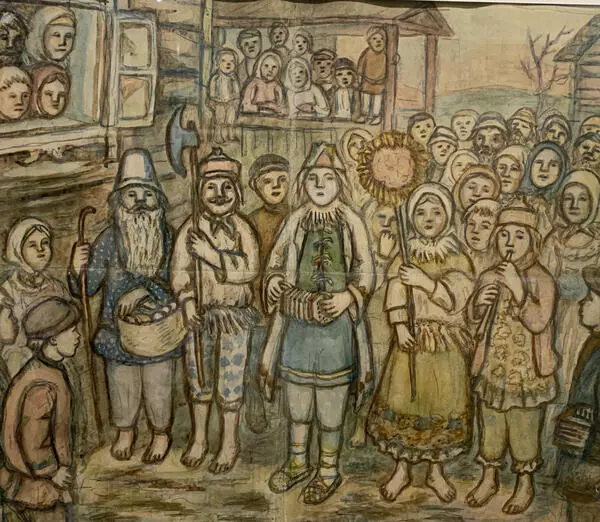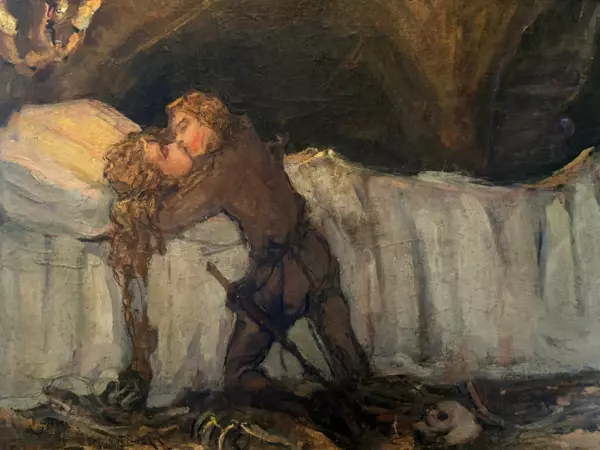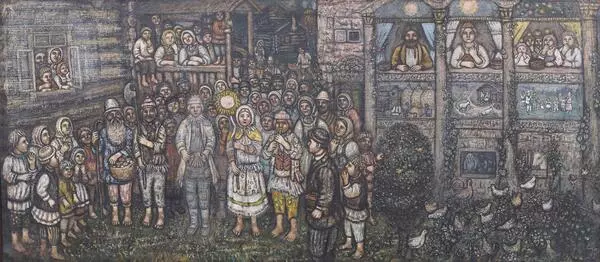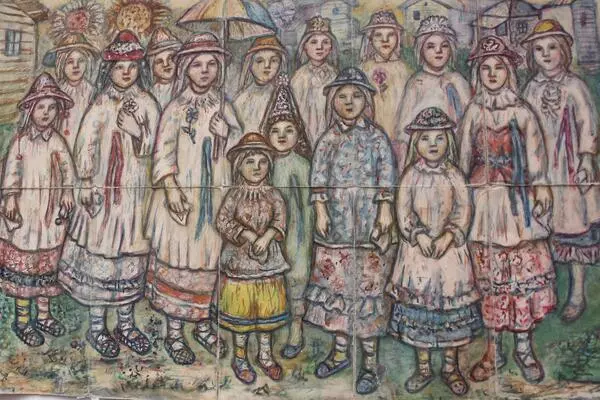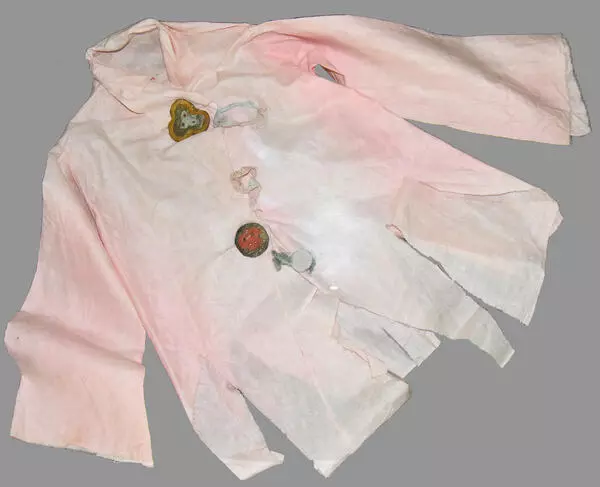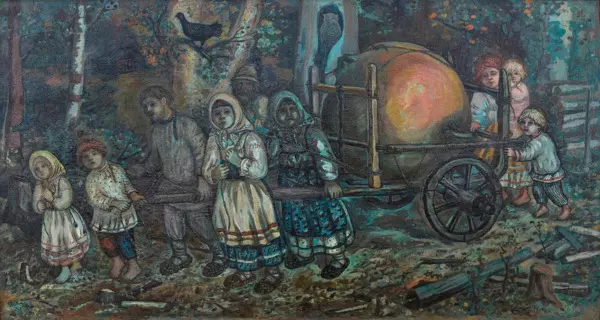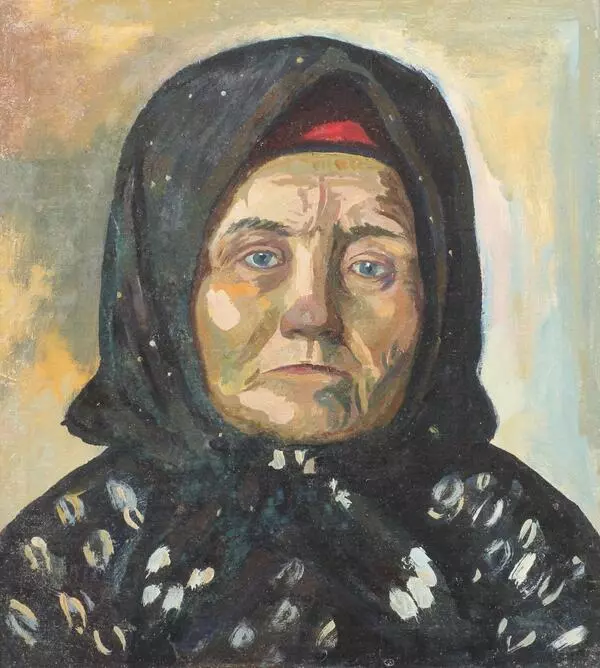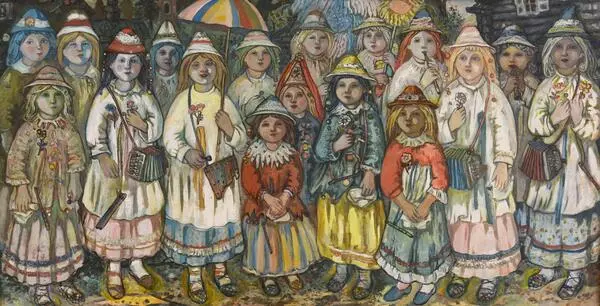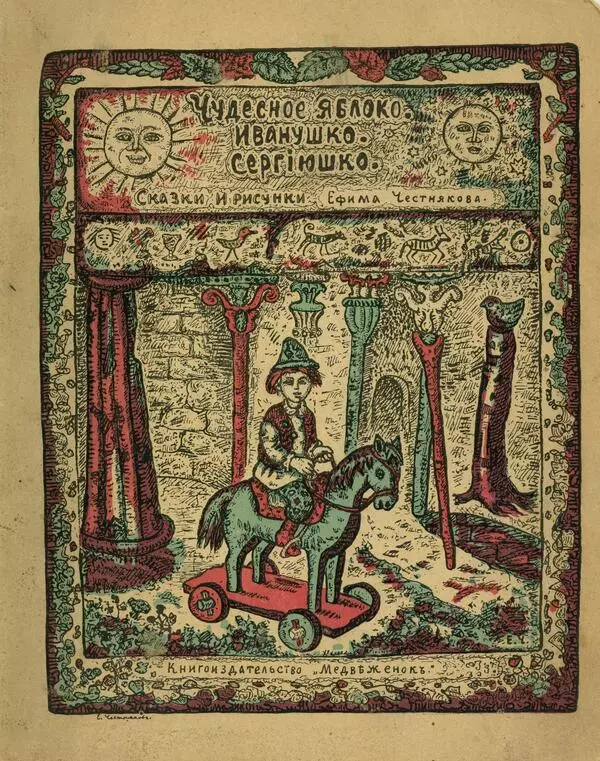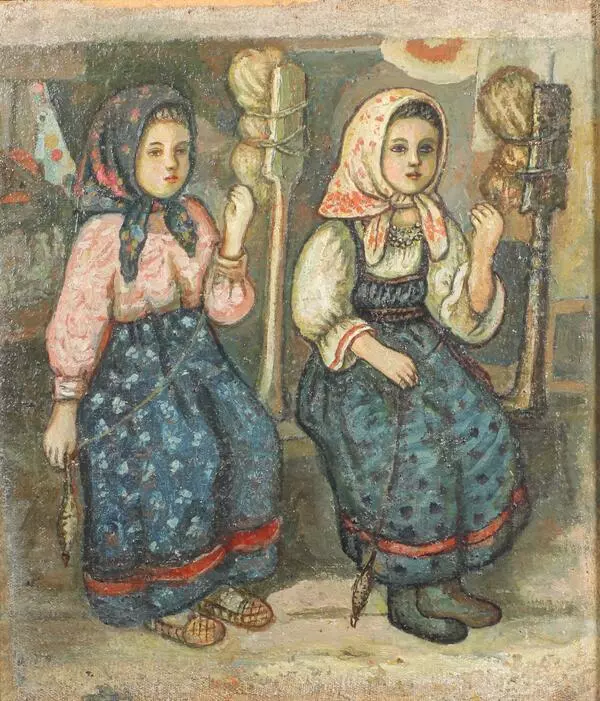Yefim Chestnyakov was an artist, writer and founder of children’s theater. As a young man, he worked as a teacher in the village of Zdemirovo in the Kostroma Governorate. After his transfer to Vichugsky Krai (territory), Yefim Chestnyakov began to write and paint. In fact, his creativity was highly regarded among local intellectuals. Benefactors paid for his 7 years of study in Saint Petersburg, and afterwards he returned to the village of Shablovo. Several years later, after his first “retreat” back to his village, he returned to Saint Petersburg to study. Once World War I started, he came back home for good, to the village of ShAblovo where he worked for the rest of his life.
Yefim Chestnyakov became interested in sculpting early on his creative career while he was studying in Saint Petersburg. Whenever the artist visited the Hermitage Museum, he could easily examine terracotta figurines, made by talented craftsmen from the small Boeotian town of Tanagra, for hours. Yefim Chestnyakov found everything about them fascinating: the way they had been made and painted, and how accurately they depicted real life so clearly portrayed by these figurines. Undoubtedly, the works of art from TAnagra were the inspiration behind the expressive statuettes made by the artist from Shablovo, who called them clay sculptures. Researchers think that the figurine “The head of a girl with a pink ribbon” is one of Yefim Chestnyakov’s early works. They believe it was made in Saint Petersburg, at the time when the artist was actively exploring his creativity. During that period, he created statuettes of dainty young women.
The clay sculpture is missing the crown of the hat and has small defects, but the girl herself managed to withstand the test of time. It is a bust of a young woman (up to her shoulders). She has a round face, a straight nose and blue eyes. Her hair is long and reaches her shoulders. The girl is wearing a light-colored hat with a brim adorned with a pink ribbon. Yefim Chestnyakov’s style as a sculptor was characterized by his attention to the smallest details, a homogeneous-looking surface of his figurines and the link between his creations and characters from literature. There was interest in the clay sculptures made by Yefim Chestnyakov, but he refused to sell them. “If people talk about the sale of my clay sculptures, it means they fail to understand how they were created and what ought to happen next to them. If I chose to listen to such individuals and sold what I had made, there would be no further work. They were not created to be sold. I converse with the public via them. …; If we were to tell a ploughman “Sell your plough, and then you will get some money to buy bread, ” or a musician “Give away the violin that you made”, ” Yefim Chestnyakov wrote in 1914.
Yefim Chestnyakov became interested in sculpting early on his creative career while he was studying in Saint Petersburg. Whenever the artist visited the Hermitage Museum, he could easily examine terracotta figurines, made by talented craftsmen from the small Boeotian town of Tanagra, for hours. Yefim Chestnyakov found everything about them fascinating: the way they had been made and painted, and how accurately they depicted real life so clearly portrayed by these figurines. Undoubtedly, the works of art from TAnagra were the inspiration behind the expressive statuettes made by the artist from Shablovo, who called them clay sculptures. Researchers think that the figurine “The head of a girl with a pink ribbon” is one of Yefim Chestnyakov’s early works. They believe it was made in Saint Petersburg, at the time when the artist was actively exploring his creativity. During that period, he created statuettes of dainty young women.
The clay sculpture is missing the crown of the hat and has small defects, but the girl herself managed to withstand the test of time. It is a bust of a young woman (up to her shoulders). She has a round face, a straight nose and blue eyes. Her hair is long and reaches her shoulders. The girl is wearing a light-colored hat with a brim adorned with a pink ribbon. Yefim Chestnyakov’s style as a sculptor was characterized by his attention to the smallest details, a homogeneous-looking surface of his figurines and the link between his creations and characters from literature. There was interest in the clay sculptures made by Yefim Chestnyakov, but he refused to sell them. “If people talk about the sale of my clay sculptures, it means they fail to understand how they were created and what ought to happen next to them. If I chose to listen to such individuals and sold what I had made, there would be no further work. They were not created to be sold. I converse with the public via them. …; If we were to tell a ploughman “Sell your plough, and then you will get some money to buy bread, ” or a musician “Give away the violin that you made”, ” Yefim Chestnyakov wrote in 1914.


